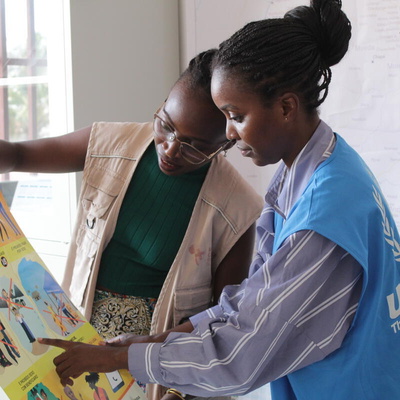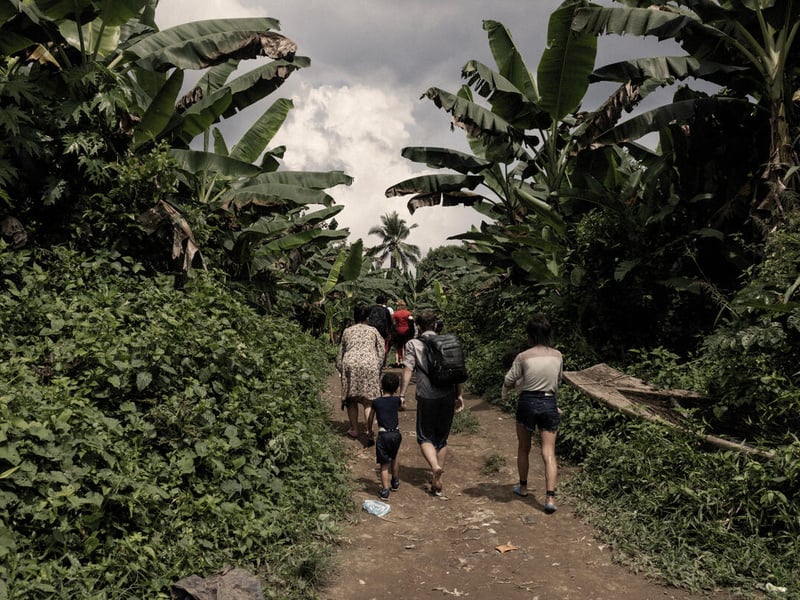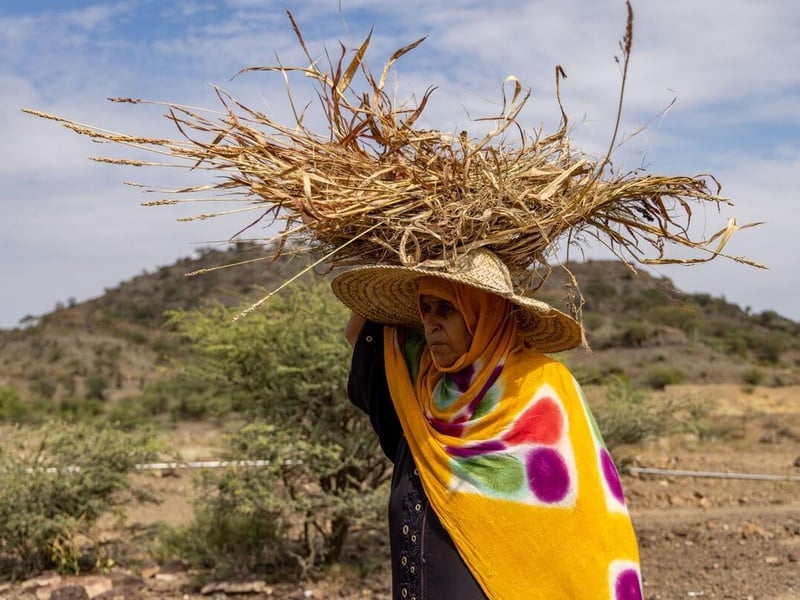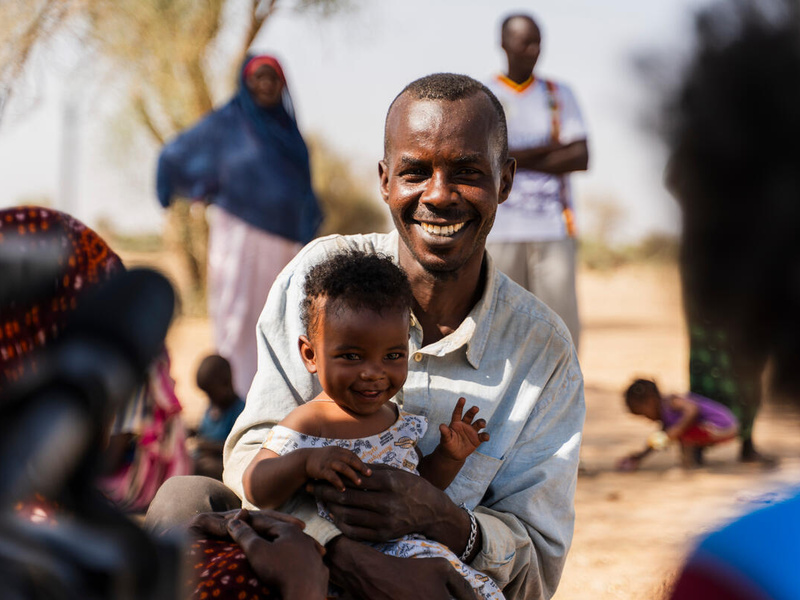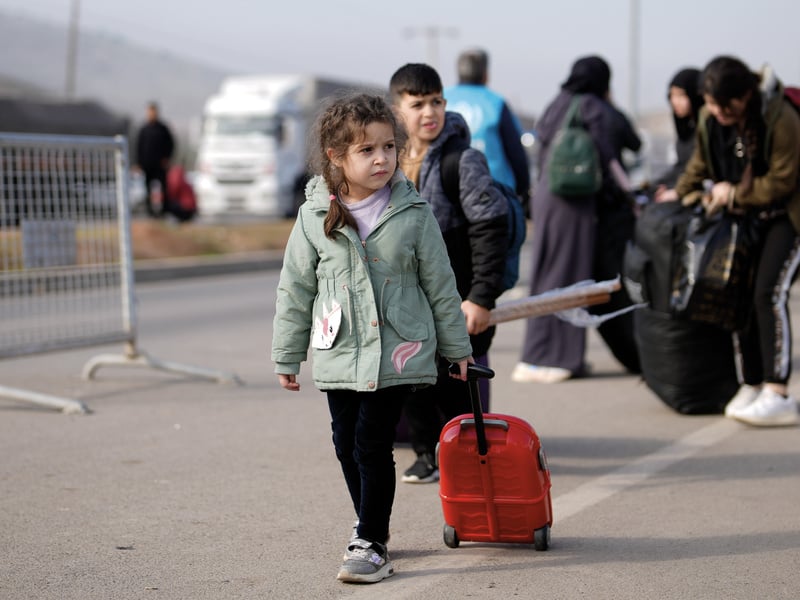Planning, funding and results
Planning, funding and results
Explore up-to-date information on the organization’s programmes, operations, financial needs, funding levels, and donor contributions.

Looking for more information? Check out our FAQs
This section provides key financial reports – including the Global Appeal and Global Report – and up-to-date information on flexible funding, underfunding, budget, expenditure and donor contributions. It highlights the importance of unearmarked funding, the impact of financial gaps, and how resources are allocated and spent.
To enhance accessibility and transparency, UNHCR’s financial data hosted until recently on Global Focus, is being integrated into UNHCR's global website, offering a new user-friendly platform designed to improve engagement and provide real-time insights into humanitarian needs and response efforts.
Global funding overview
Current budget: $10.604 billion
Estimated funds available: 33%
Click the button below for a detailed breakdown of contributions received.
Detailed information is also available on the contributions page.
Operations overview
The map below highlights the 59 UNHCR operations with detailed Annual Results Reports included in the Global Report 2024.
Multi-year strategies for the operations shown on the map are available in the documents section, and are published each year with the Global Appeal.
Related topics
In 2017, the High Commissioner set out five Strategic Directions to chart a path forward between 2022 and 2026, committing UNHCR to protect, respond, include, empower and pursue solutions for refugees and other forcibly displaced.
COMPASS is UNHCR’s results-based management approach that uses data and evidence to define goals, track core indicators, monitor progress, and adapt efforts to deliver better protection and solutions for displaced and stateless people worldwide.
The refugee coordination platform provides inter-agency guidance, tools, and response plans, based on the refugee coordination model that promotes inclusive, accountable responses led by governments with support from UNHCR and partners.
The UNHCR's Refugee Population Statistics Database provides more than 70 years of detailed data on forcibly displaced populations - including refugees, asylum-seekers, stateless, and internally displaced people - along with other key information.
The Operational Data Portal offers field-driven data and information from host countries, UNHCR, and partners at country and situation levels, serving as a key platform for data sharing and coordination in refugee emergencies.
The International Aid Transparency Initiative (IATI) is a voluntary, multi-stakeholder effort to improve transparency in development and humanitarian aid by publishing open, standardized data - including information of UNHCR on its funding and activities.
Who funds UNHCR?
UNHCR's work is mainly funded by governments of the UN member States that set UNHCR up more than seven decades ago. Member States, as well as the EU, provide around 80% of UNHCR’s funding in any given year, including over two-thirds of unearmarked and softly earmarked funding.
Private donors have become an increasingly important source of funds in the past decade, with millions of individuals and hundreds of companies and foundations generously supporting our work. Much of this private funding is channelled through UNHCR’s National Partner organizations, such as España con ACNUR.
Read more on contributions.
How much funding does UNHCR need?
Every year, UNHCR projects the cost of meeting the needs of forcibly displaced and stateless people around the world. This covers a huge array of activities, ranging from life-saving protection and assistance in the early stages of an emergency, all the way through to solutions such as resettlement and voluntary repatriation.
These projected costs are set out in an annual budget that is submitted to UNHCR’s Executive Committee for approval. Once approved, we publish a Global Appeal to ask donors for support. Read more on budget and expenditure.
As important as quantity, the quality of funding is a critical element: UNHCR needs funds which are disbursed as early in the year as possible (timely), or that we know are coming (predictable), that can be used longer than a year (multi-year), that have limited or standardized reporting requirements (ideally, that use the Global Report), and which are flexible: that is, funding which is unearmarked or softly earmarked. Read more on flexible funding.
What happens if UNHCR faces a new emergency that it did not budget for?
Unforeseen crises sometimes require UNHCR to act urgently and at scale. A new crisis might add significantly to the needs set out in the approved annual budget, meaning that UNHCR does not have funding in place. In such cases, UNHCR may seek more funds by issuing a “supplementary budget”, on top of the funding needs outlined in the Global Appeal for the year.
If a supplementary budget is approved, it is followed by a supplementary appeal for external audiences. This appeal explains what action we plan to take, and shows how much funding is required. You can check our Emergency pages for information on major displacement crises that we are tackling worldwide.
How much difference do individual donors and companies make?
The support of private donors is absolutely vital for UNHCR. Companies, foundations and individuals' support has been growing steadily. As recently as 2010, the private sector accounted for only 4% of UNHCR’s income, but it has become one of our strongest sources of support.
What does UNHCR do with your donation?
UNHCR protects and supports people who have been forced to flee. We do this by delivering life-saving assistance in emergencies and by ensuring that there are laws and systems in place to protect their rights. When conditions are right, we help them return home. If they cannot go home, we ensure they can meet their basic needs, such as health care, shelter and clean water, and that they are empowered to build better futures, with opportunities for work and education. Many vulnerable refugees need to resettle in a new country, and we work with partners around the world to make that happen. UNHCR also works to protect the rights of stateless people and aims to end statelessness for good.
Read more on UNHCR’s achievements in the latest Global Report, and about its plans for the coming year in the latest Global Appeal. Find out the latest population figures for forcibly displaced and stateless people at the Refugee Data Finder, or at Global Trends.
How is UNHCR accountable to its donors?
We issue a Global Report once a year, normally around June, which gives a full account of the many ways our donors supported our work in the previous year (see below).
Throughout the year, we also issue a range of regular reports, such as monthly operational or regional reports, and updates on global programmes such as cash, health or shelter. We also issue regular emergency reports anytime a new emergency arises.
UNHCR also reports throughout the year to its Executive Committee (in October), and to the Standing Committee (March, June and September).
What is the difference between Global Report and Global Trends?
The Global Report is UNHCR’s primary reporting and accountability product. It presents the work carried out by UNHCR in a given year to protect and improve the lives of people under UNHCR’s mandate – refugees and asylum-seekers, returnees, internally displaced people, stateless persons and others of concern. It highlights the year’s achievements, how we used the resources we were given, as well as challenges faced by the organization and its partners. An integral part of the Global Report are the Annual Results Reports, which offer detailed reports at the operational level.
Global Trends is an annual report issued by UNHCR that provides key statistical trends on forced displacement. It includes the latest official statistics on refugees, asylum-seekers, internally displaced and stateless people, as well as the number of refugees who have returned home.
What is the timeline of Global Appeal and Global Report and when are they officially presented?
The Global Appeal is issued every year to Member States at the annual pledging conference. This takes place in December, at which pledges of funding are made against the budget for the year to come.
The Global Report is issued in June at Standing Committee, and covers the previous year’s results and achievements.
As an example of the life cycle of the Global Appeals and Reports: the Global Appeal for 2025 was issued at the December 2024 pledging conference. It will be reported on in the 2025 Global Report, which will be issued in June 2026.
I can't find some information related to funding and results. Where should I go?
We’re sorry for any inconvenience, but we’re reshaping some environment of this global website following the transition of content from Global Focus. During this transition, some pages will be swapped for new ones.
Please try using our search and if you still can’t find what you’re looking for, please reach out to us at [email protected]. We are updating pages and sections daily.

